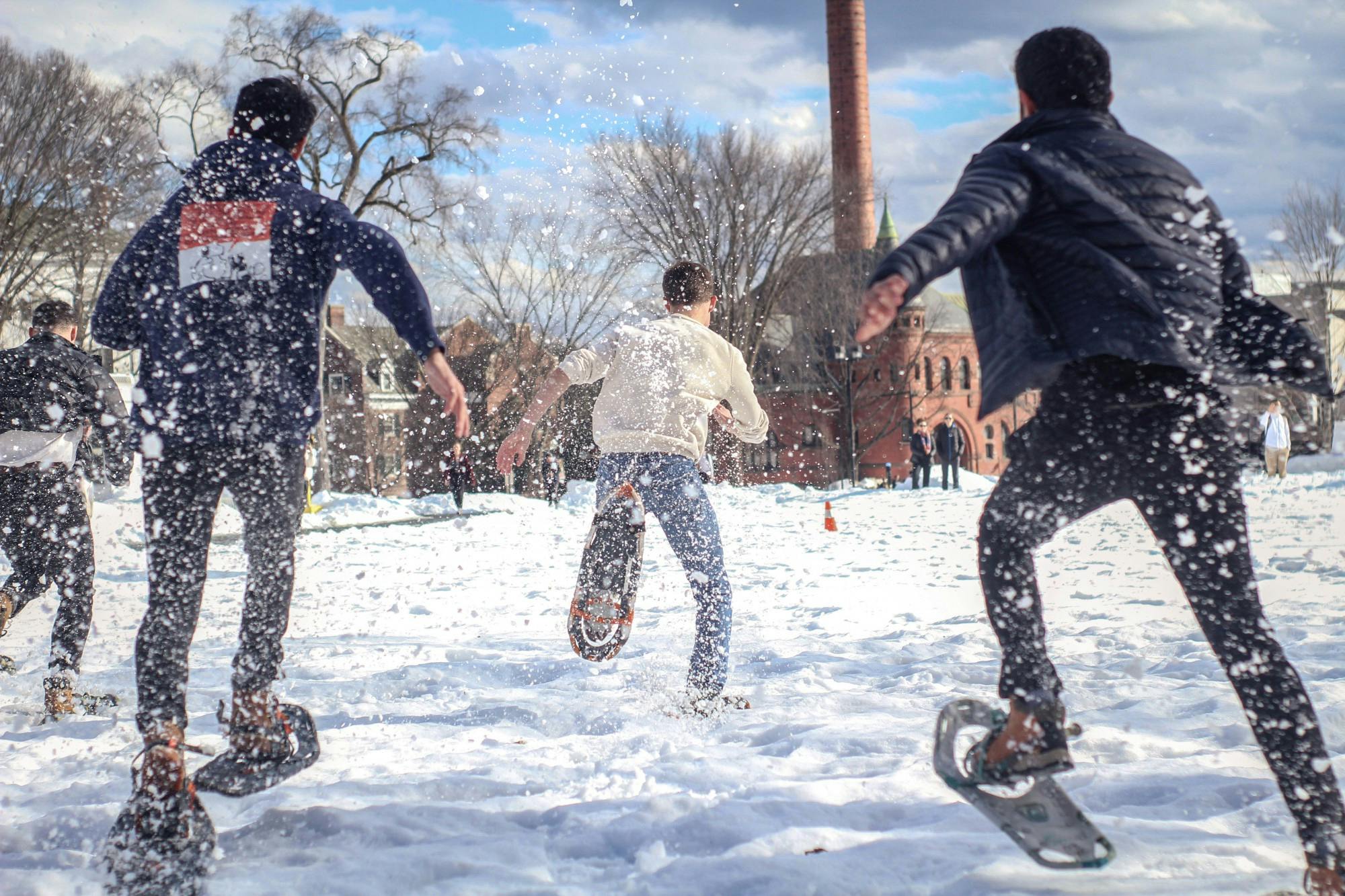This article is featured in the 2023 Winter Carnival special issue.
As one of Dartmouth’s oldest traditions, Winter Carnival is less focused on institutional efforts than one might expect. Rather, it is dependent on the engagement and enthusiasm of the students on campus, according to Winter Carnival Council co-chair Lucas Gatterman ’23.
“Without Winter Carnival, I don’t think we would have something that would really bring the community together… during winter term,” Gatterman said. “We [students] have a direct influence on how we shape Winter Carnival every year.”
However, one of the biggest logistical hurdles to creating a successful Winter Carnival in recent years has been getting student volunteers, according to Collis Center director of student involvement David Pack.
“Last year’s Polar Bear Swim almost didn’t happen, primarily because the number of people participating in Winter Carnival Council was so small,” Pack said. “That was the first year that we actually had to go outside of Winter Carnival Council to recruit volunteers to help staff the swim.”
In years surrounding the COVID-19 pandemic, the 2021 Winter Carnival saw low initial engagement and in 2022, and while students turned out in record numbers for the Polar Bear Swim, some found their great expectations overall dashed.
The famed Dartmouth Polar Bear Swim — in which students swim across the cold waters of a section cut out of the frozen Occom Pond — requires a minimum of 15 volunteers at all times during the event, said Gatterman. The Council also needs to work with a contractor and the Hanover Fire Department to ensure the event is safe, according to Pack.
For the past few years, the snow sculpture event has also been difficult to organize due to a lack of student engagement, according to Pack.
“Coming back from COVID, there was a loss of… institutional memory about how things work and how things function,” Pack said. “Most of these traditions have always [been] — and continue to be — executed by student leaders.”
Gatterman also cited the pandemic-related transitions, adding that students became reliant on the College arranging events without any effort from student input.
“[During the pandemic,] I simply got comfortable with the College being willing to put things on,” Gatterman said. “The College has pulled back resources, but the students aren’t coming back because we felt that the College was just going to continue to put resources into [Winter Carnival].”
Snow sculpture chair Cady Rancourt ’24 agreed, saying that the process of creating last year’s snow sculpture had to be adapted due to a lack of student volunteering, along with unusually warm temperatures.
“We originally had some designs that students were really excited about, but we could just not get enough people out on the Green to help fill the frame with snow, and so it ended up being a lot smaller than our original design,” Rancourt said.
Making this year’s eight-foot-tall creation is estimated to be a week-and-a-half-long process. Last year, Rancourt said that she worked with only seven students, but she is hopeful that energy from members of the Class of 2026 will bolster her team this term.
In addition to Rancourt’s position, student involvement in Winter Carnival takes a few other forms. There is a Winter Carnival Council, which is open to all students to apply for, and a handful of chairs who lead the group.
Pack also said organizers have added an “event-based volunteer model” to ensure events like the Polar Bear Swim can run. This system allows students to help out over short periods and avoid longer commitments.
The annual poster is another critical component of the Carnival because it commemorates each year for students and creates a sense of nostalgia for alumni, according to owner of Records, Posters and Memorabilia New Hampshire owner Bryan Smith.
“[The poster] brings back the memories,” Smith said. “[Winter Carnival is] the one thing you look forward to [while] in January when it’s usually the coldest… It’s the Dartmouth students who really celebrate it.”
In the 1960s, the annual Carnival began to include a theme that often reflected the cultural moment, according to Smith. This was also around the time that students began to design the posters, which before then were created for the College by Pratt School of Design, he added.
Merchandise sales featuring the design — including t-shirts, posters and stickers — constitute a “big part” of the $20,000 to $25,000 budget for Winter Carnival, according to Pack. The money is provided by the Programming Board, part of the Collis Center.
To bolster sales, the Council tries to pick a theme that is accessible to all students and also “appeals to alums,” according to Winter Carnival Council co-chair Piper Gilbert ’25. Similarly, the Council hopes to organize events that appeal to a broad swathe of students; this year, events include making origami parrots at the Hood Museum of Art and a Sunday sea shanty sing-along.
“You don’t have to love winter in order to love Winter Carnival,” Pack said. “Obviously many of the traditional events can be outdoors and cold, but every year the Council also works to come up with options for folks who may not want to spend a ton of time outside in winter.”
Gilbert said that Winter Carnival attracted her to Dartmouth as a high schooler, and added that she was struck by the dedication of the students to tradition and their beloved institution.
“I loved this idea that it was a celebration of winter, not just a survival of it. We weren’t hibernating ourselves and tucking ourselves away,” Gilbert said. “I want to not only give that to the student population here, but also people who might be prospective students.”
Charlotte Hampton is the editor-in-chief of The Dartmouth. She hails from New York, N.Y., and is studying government and philosophy at the College.
She can be reached at editor@thedartmouth.com or on Signal at 9176831832.




